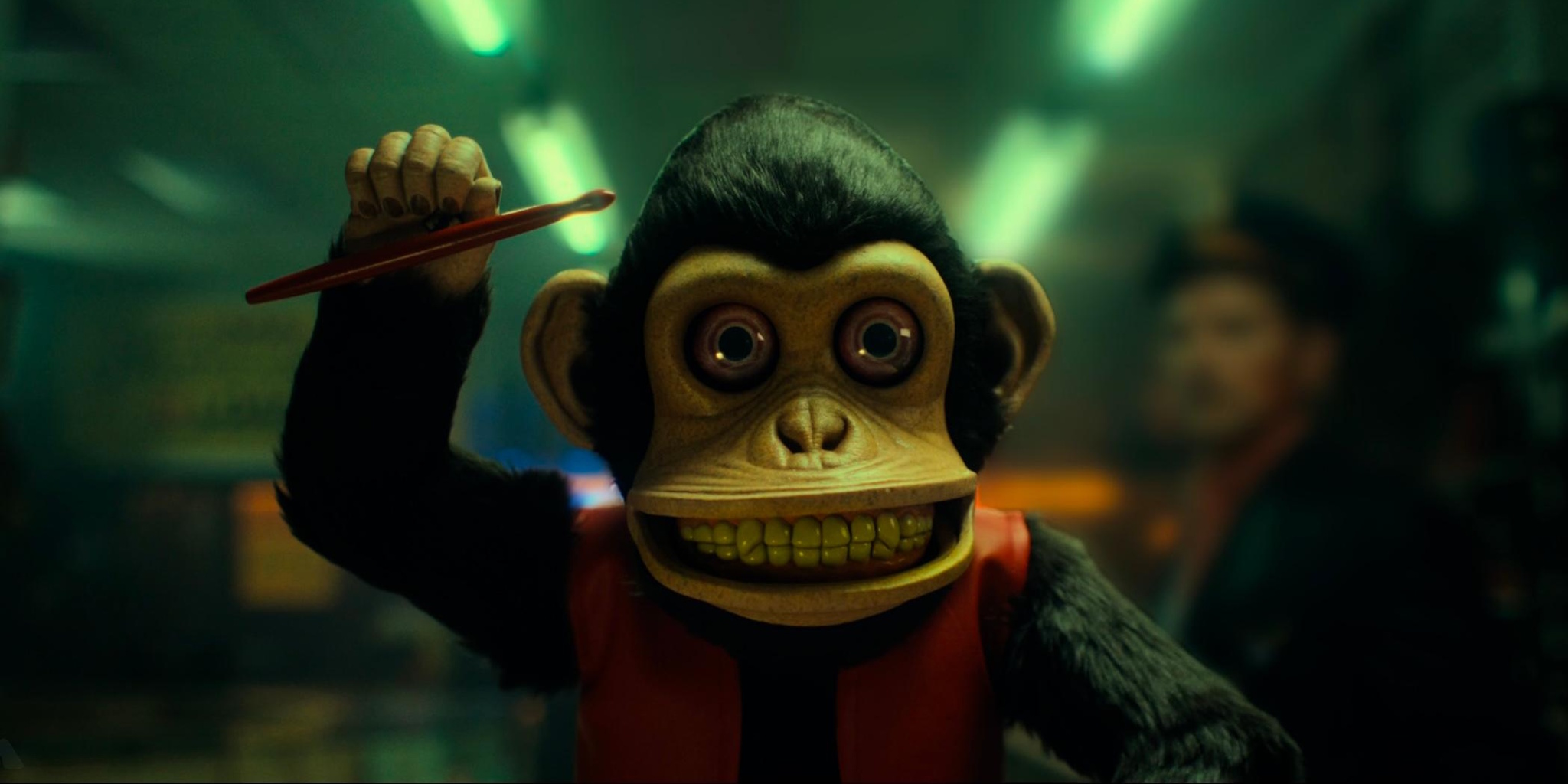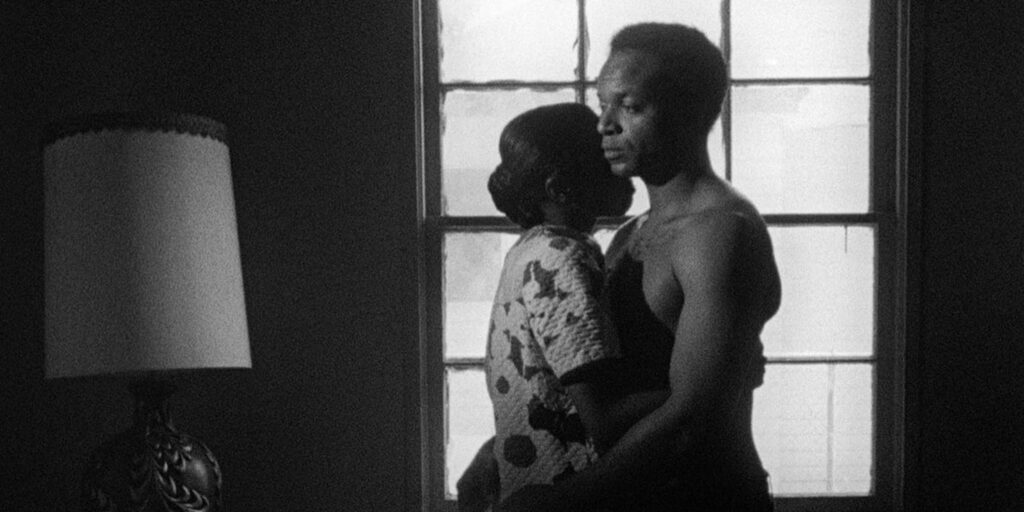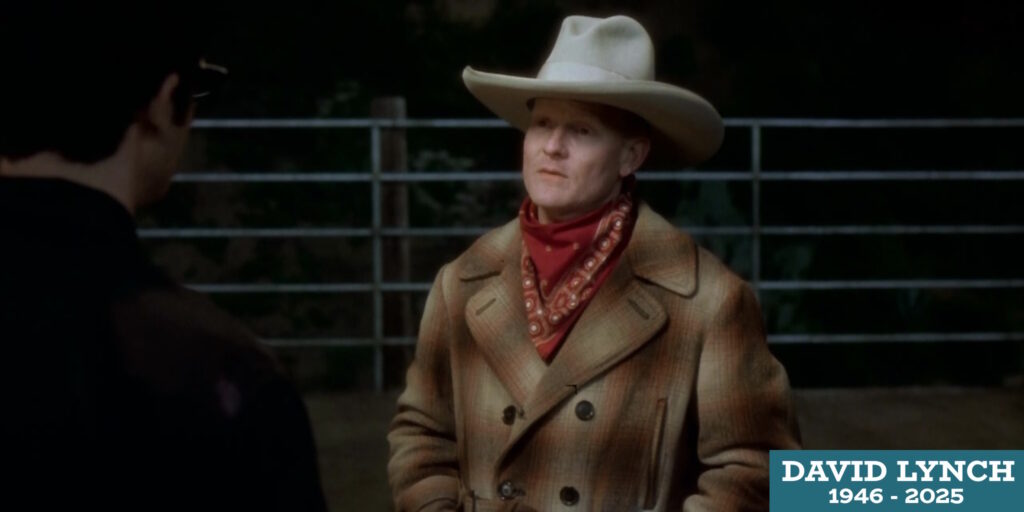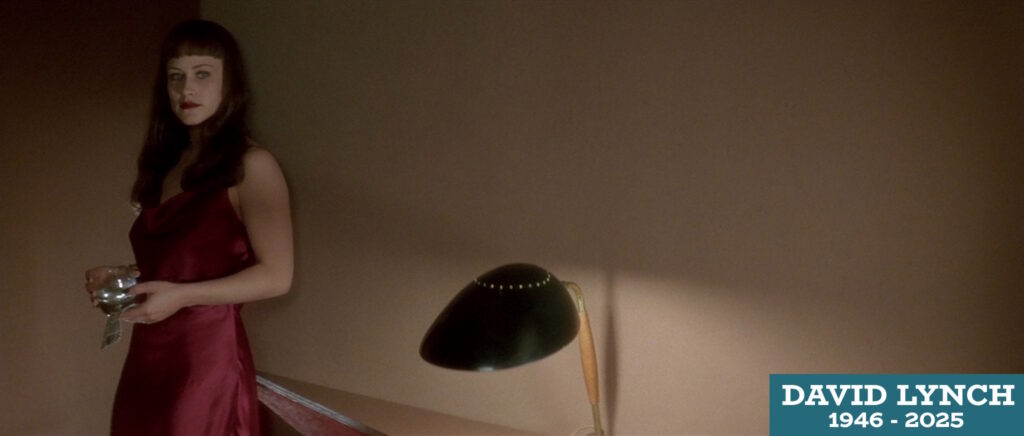Employing a dramatic, even jarring shift in tone from one narrative feature to the next is practically a horror filmmaking tradition, indulged by luminaries such as George Romero (Season of the Witch to The Crazies), John Carpenter (Christine to Starman), and Tobe Hooper (Lifeforce to The Texas Chainsaw Massacre 2). Writer-director Osgood Perkins is in good company, then, with The Monkey, which distributor Neon is positioning as something of a follow-up to the filmmaker’s chilly, divisive serial-killer riff Longlegs. At least on its goofy, gore-sprayed surface, Perkins’ latest is practically a funhouse reflection of the director’s breakout 2024 feature. Whereas Longlegs was moody, measured, and suffused with hellish dread, The Monkey is slick, punchy, and almost defiantly unserious. Of the five features that Perkins has helmed to date, his latest certainly feels like the oddball cousin of the bunch, the one who shows up at grandma’s funeral half-stoned, loudly cracking dirty jokes. Eschewing the dense, slightly surreal neo-Gothic atmosphere that was, until now, one of the director’s signatures, The Monkey goes all-in on campy performance and cartoonish violence. In some ways, however, it might also be the bleakest film Perkins has ever made.
Very loosely adapted from a 1980 Stephen King short story – republished in the 1985 collection Skeleton Crew, which also featured iconic works such as “The Mist,” “The Raft,” and “Survivor Type” – The Monkey centers on, well, a monkey. A windup toy monkey, to be precise, which approximately 25 years ago tumbled into the lives of tweenage twin brothers Hal and Bill Shelburn (both played by Christian Convery). Discovering the clockwork diversion while scrounging through their absent father’s collection of left-behind tchotchkes, the boys are equal parts amused and unsettled by the stuffed simian’s rictus grin. “Turn the key and see what happens!” urges the toy’s retro packaging. What happens is this: The monkey thumps stiffly on its little snare drum to a tinny Sousa march, and then someone dies, usually in an improbable and spectacularly messy accident.
The first victim of this demonic toy is the boys’ unfortunate babysitter (Danica Dreyer), who meets her gruesome end while seated next to the brothers at a teppanyaki restaurant. The twins’ mom, Lois (Taian Maslany), a down-to-earth but slightly disengaged single parent, doesn’t sugarcoat reality for their comfort: “Everybody dies. Some of us peacefully and in our sleep, and some of us horribly. And that’s life.” Mom isn’t wrong, necessarily, but her worldview doesn’t account for the active, trickster-god power of a cursed windup toy – or the potential malice guiding the human hand that turns its clockwork key.
Indeed, Hal begins fantasizing not-so-idly about using the monkey for vengeance-related purposes, whether on the mean-girl squad at school or his own asshole twin brother. Regrettably, the monkey doesn’t take requests. Perkins’ screenplay leaves the details of the toy’s nature deliberately fuzzy, but there does seem to be one ironclad rule: The key-turner is always safe from the monkey’s curse, but they otherwise have zero control over the trajectory of its lethal, Rube Goldberg-like power. Accordingly, it’s hard to quibble with the brothers’ ultimate decision to consign the malevolent toy to the bottom of a dry well behind their aunt and uncle’s house in the middle-of-nowhere town of Casco, Maine.
Fast-forward a quarter of a century: Hal (Theo James) would be the first to admit that the bloody tragedies that punctuated his childhood have left him an anxious, unreliable mess. Friendless and under-employed, he’s now a deadbeat dad himself, having abdicated responsibility for his adolescent son, Petey (Colin O’Brien), to his ex (Laura Mennell) and her self-help mogul husband, Ted (Elijah Wood, in a glorified but entertaining cameo). Although he believes that staying out of his son’s life is the best strategy for everyone, Hal agrees to share one last weekend with Petey before the boy’s formal adoption by Ted. Unfortunately, this awkward father-son road trip is interrupted by the sudden death of Hal’s Aunt Ida (Sarah Levy), whose demise is Looney Tunes-worthy in its over-the-top ludicrousness. This prompts a detour to Casco, where a call from Hal’s estranged brother, Bill (also James), confirms his worst fear: Somehow, the monkey has returned.
Compared to most horror films about cursed objects, The Monkey is light on backstory. Who created the monkey or why is never elucidated, and the toy seems to resist every attempt to dispose of or destroy it. “It’s basically the Devil,” insists Hal at one point, but it would be more accurate to describe it as a magical artifact whose power is narrow but essentially unlimited. Unlike the Final Destination franchise – to which this film will inevitably be compared – The Monkey offers no supernatural loopholes for its characters. The monkey cannot be dissuaded from its grim handiwork, because it is an object: amoral, arbitrary, and merciless. (“Like life,” Hal reads on the toy’s original box. “You mean life-like?” puzzles Bill. “No, like life.”)
In truth, The Monkey is less a proper horror film than a pitch-black comedy, consistently favoring laughs – both nervous titters and disbelieving howls – over genuine scares. Perkins and his collaborators lean into the story’s gooey, R-rated violence, which imagines human beings as little more than walking sacs of pressurized viscera. The film’s monkey-abetted accidents tend to explode their victims into goulash, regardless of whether the mechanism is a shotgun blast, electrified swimming pool, or herd of stampeding horses. It’s shockingly far afield from Perkins’ usual methods; there’s no wintery atmosphere of choking doom here. It’s wall-to-wall splattershtick silliness, as filtered through the mainstream sensibilities of Joe Dante and Robert Zemeckis (with some Courage the Cowardly Dog thrown in for good measure).
James holds the whole endeavor together well enough, playing Hal as a stammering schlimazel who is self-aware about the absurdity of the situation in which he finds himself. (Not to mention the amusing dissonance between his leading-man looks and hapless, divorced-dad energy.) Maslany smuggles a welcome softness beneath her character’s distinctly non-maternal cynicism, and O’Brien is essentially playing the straight man to the bumbling, oddball adults who surround him. Most of the other performances – including James’ more uneven turn as Hal’s emotionally stunted brother – are hit-or-miss when it comes to the film’s admittedly eccentric comedic tone.
Perkins’ screenplay at times feels pulled in two different directions: It aspires to convey some genuine heart when it comes to parent-child relationships, but it longs to fully embrace a sense of morbid, nothing-is-sacred irreverence. To this latter end, it tends to populate its supporting cast with glorified Simpsons characters. None are more glaring in their sore-thumb cartoonishness than heavy-metal meathead Ricky (Rohan Campbell), whose Joey Ramone haircut and throwback mannerisms are given a baffling amount of screentime. Here and elsewhere, Perkins’ film betrays evidence of a slightly different feature that was carved away in the editing process, one stuffed with wacky small-town characters and a more farcical, convoluted plot.
The true MVPs of the film are arguably editors Graham Fortin and Greg Ng, reteaming with Perkins from Longlegs. Many of the feature’s biggest laughs arrive courtesy of their cuts, which turn some of the story’s most horrific moments into deliriously fine-tuned punchlines. The smash-cut to a funeral – complete with somber organ music – might be a well-worn comedic tradition, but Perkins and his team employ it (repeatedly) with delightful precision. Likewise, they are aficionados of what might be termed the “Hereditary flash”: an abrupt, shocking insert shot depicting the gruesome aftermath of a violent death. What’s more, the film looks uncommonly great for a $10 million horror feature, as cinematographer Nico Aguilar bestows each shot with a soft, rich quality without leaning oppressively into any single aesthetic. (Imagine that: Varying the palette and lighting depending on the needs of the scene!)
King’s original story is a brief but bleak slice of Poe-indebted horror, one that grapples subtextually with cycles of abuse and a father’s Oedipally tinged resentment toward his pubescent son. Perkins has been open about the personal history that prompted him to approach the seed of King’s tale quite differently, through an overtly comedic lens that underlines that cosmic absurdity of mortality. In the present horror landscape, The Monkey is ultimately better for this adaptational change: The last thing the genre needs right now is another film about generational trauma. Perkins’ film emphasizes both the certainty and the arbitrariness of death, offering no balm for the existential terror of our cursed existence beyond its passing corporeal pleasures. (Eat, drink, and be merry, for tomorrow we may be impaled and disemboweled by an antique spear gun.)
There’s something almost refreshing about the film’s adamant refusal to amend its pessimistic view of the universe’s cruelty with an addendum about the power of love or some such pablum. That makes The Monkey a grim film even by Osgood Perkins standards, which is saying something in a filmography where death and the Devil rack up a lot of wins. Perkins’ work has consistently exhibited an iconoclastic interest in the porosity of boundaries that we would rather imagine as being inviolate, and The Monkey might be the most holistic expression of this notion yet. Death comes for us all in the end, and rarely when it is just, poetic, or convenient. Usually, it’s pretty gross.
The Monkey opens in theaters everywhere on Friday, Feb. 21.




